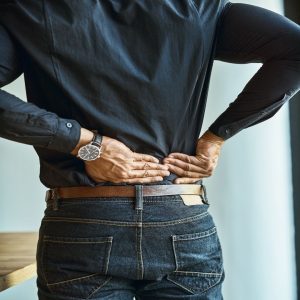Scoliosis and Hip Pain
It is critical to focus on your back when you have back pain. However, you should also remember that the body is a connected whole, more than just the sum of its parts. While both men and women report having back problems, those 25 years of age and older are more likely to report them. Are you aware that tight hips are one of the causes of lower back pain? Lower back pain can result from tight hip flexor muscles, whether sitting too long or regular exercise. Hamstrings and hips can contribute to back pain, which can be relieved by targeting these areas. Furthermore, thighs, hips, and glutes could also be stretched and strengthened to reduce lower back pain. If you are concerned about your back pain or scoliosis, contact Dr. Han Jo Kim for scoliosis treatment nj today!
Symptoms of Tight Hip

Pain and inflexibility can be experienced on the front of the hip towards the upper thigh muscle, and you may also feel back pain due to tight hip flexors. Hip flexor problems can cause various physiological issues since everything in your body is connected.
Regularly stretching and extending your hip flexor muscles will keep them flexible and working properly. The opposite occurs when you sit for long periods. In turn, your hip flexors become short and tight. During a long car ride or after sitting at your desk all day, you may feel sore or stiff in your hips or back.
You may also become tight in your hip flexors from certain types of exercise, such as running. Running shortens your hip flexors rather than lengthening them. When you run regularly, your hip flexors are likely to be tight. Walking, bending, and standing are more difficult when the hip flexors are tight. Besides causing back pain, they can also cause muscle spasms in the thighs, hips, and lower back. You can tear them if you make a sudden movement or exercise with tight hip flexors.
Exercise For Tight Hip Flexors:
- In a flat position, lie on your back.
- Bring both knees up to your chest.
- As you straighten your left knee, lower it as far towards the earth as you can while maintaining a hold on your right knee
- Then repeat the process on the other side.
Hip flexors are considered tight if you cannot lower your extended leg to the ground. Your hip flexors are a group of muscles located at the front of both hip joints near the top of your thigh. These muscles connect your upper thigh to your hip and allow you to lift your leg at the waist. Hip flexor muscles include the psoas, rectus femoris, tensor fasciae latae, and sartorius. You directly connect your psoas (the main muscle that helps you bend your hip) and your lower back (lumbar vertebrae). Tight hip flexors can cause lower back pain, sacroiliac joint pain, scoliosis and hip pain even if lower back pain isn’t always connected with your hips.
Ways to Relieve Tight Hip
You can maintain a loose hip flexor by stretching regularly. You will have fewer chances of experiencing hip and back pain and avoid injuries. Contact us for scoliosis treatment nj today! Follow these four easy stretches every day. Whenever you feel tight in your hips, you can do these exercises before you exercise, after long periods of sitting, or any time you need to warm up.
Seated Butterfly Stretch:
- Your knees should be bent as you sit on the floor. Keep your back straight.
- Allow your knees to open slowly. Next, pull your feet together.
- Let your knees get closer to the floor while keeping your hands on your feet or ankles.
- Keep holding for 20 to 30 seconds. Remember to keep breathing throughout the stretch.
Hip Flexor Stretch:
- On a stable bench or your bed, lie flat on your back. Legs should be bent at the knees and comfortably hung off the end of the bench or edge of the bed.
- Bend your knee while lifting one leg slowly. Bring the knee towards your chest. Maintain a relaxed stance and hang your other leg off the bench. (Your hips should feel stretched but not painful.)
- Keep holding for 15 to 30 seconds. Switch legs. Do this two to four times on each side. This exercise can also be done flat on the floor. Extend your leg straight out along the floor rather than hanging off the edge.
Seated Rotation Stretch
- Place your legs straight out in front of you as you sit on the floor.
- Lie on your right side and cross your right leg over your left. Bring your right leg up toward your chest.
- Bend your right knee (bent) while slowly rotating your torso.
- Face your right shoulder and turn your head.
- For a full twist, place your left arm on the outside of your right leg.
- Then switch legs after holding for 15-30 seconds. Repeat on each leg twice.
Dr. Han Jo Kim – Scoliosis Treatment NJ
Doing exercises that strengthen your hips is always a good idea. You may avoid pain and injury by having strong hip flexors. If you have problems or concerns regarding your back pain or scoliosis, contact Dr. Han Jo Kim for scoliosis treatment nj today! Dr. Han Jo Kim provides a comprehensive patient care approach when determining a patient’s treatment options. Before recommending surgery, he works to ensure that all other surgical options are explored. Contact us today to see what we could help you with!


